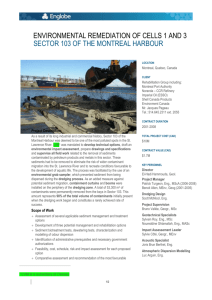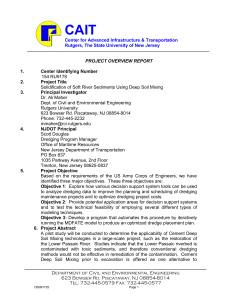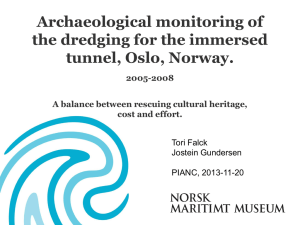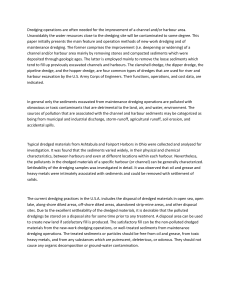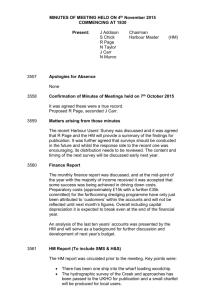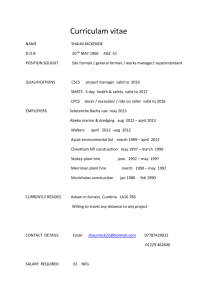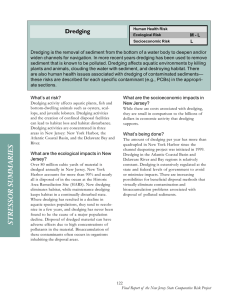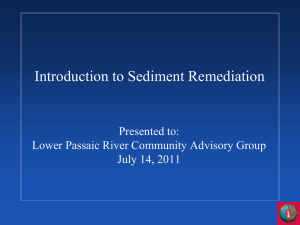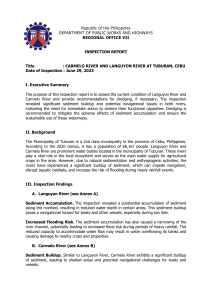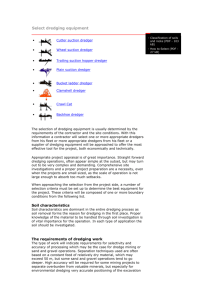Internal nutrient load from sediments of shallow lakes such as Lake
advertisement
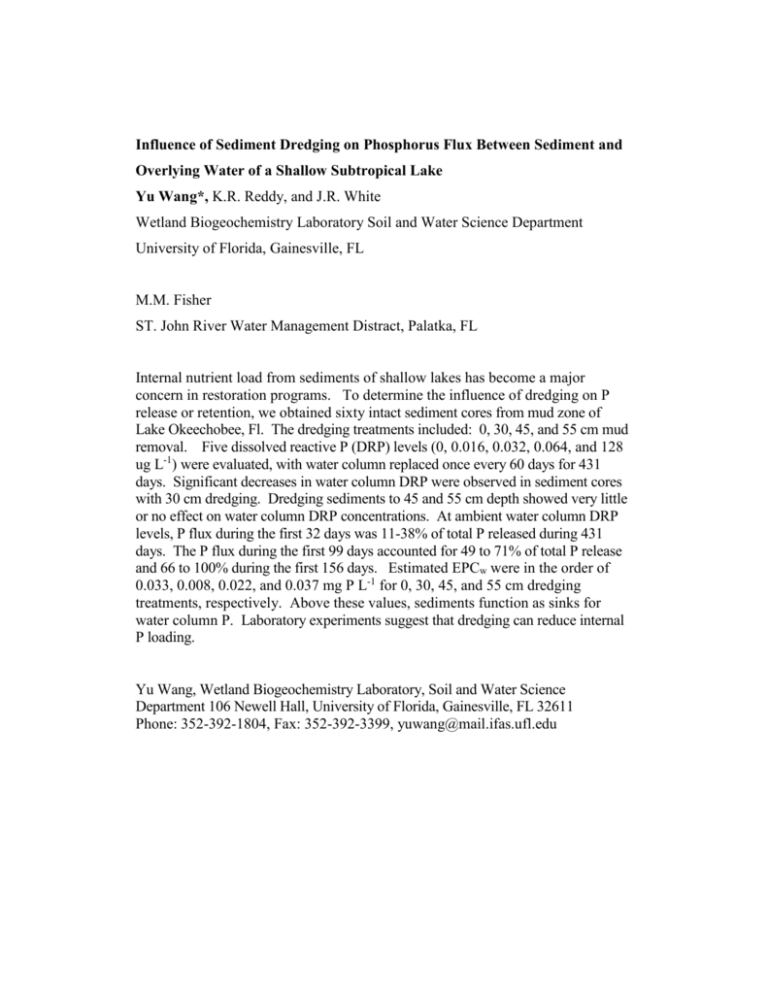
Influence of Sediment Dredging on Phosphorus Flux Between Sediment and Overlying Water of a Shallow Subtropical Lake Yu Wang*, K.R. Reddy, and J.R. White Wetland Biogeochemistry Laboratory Soil and Water Science Department University of Florida, Gainesville, FL M.M. Fisher ST. John River Water Management Distract, Palatka, FL Internal nutrient load from sediments of shallow lakes has become a major concern in restoration programs. To determine the influence of dredging on P release or retention, we obtained sixty intact sediment cores from mud zone of Lake Okeechobee, Fl. The dredging treatments included: 0, 30, 45, and 55 cm mud removal. Five dissolved reactive P (DRP) levels (0, 0.016, 0.032, 0.064, and 128 ug L-1) were evaluated, with water column replaced once every 60 days for 431 days. Significant decreases in water column DRP were observed in sediment cores with 30 cm dredging. Dredging sediments to 45 and 55 cm depth showed very little or no effect on water column DRP concentrations. At ambient water column DRP levels, P flux during the first 32 days was 11-38% of total P released during 431 days. The P flux during the first 99 days accounted for 49 to 71% of total P release and 66 to 100% during the first 156 days. Estimated EPCw were in the order of 0.033, 0.008, 0.022, and 0.037 mg P L-1 for 0, 30, 45, and 55 cm dredging treatments, respectively. Above these values, sediments function as sinks for water column P. Laboratory experiments suggest that dredging can reduce internal P loading. Yu Wang, Wetland Biogeochemistry Laboratory, Soil and Water Science Department 106 Newell Hall, University of Florida, Gainesville, FL 32611 Phone: 352-392-1804, Fax: 352-392-3399, yuwang@mail.ifas.ufl.edu
